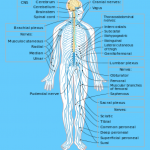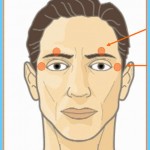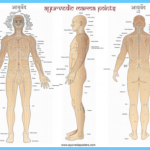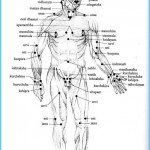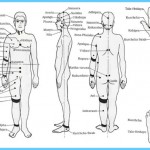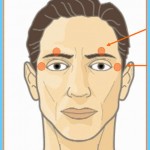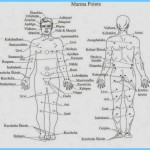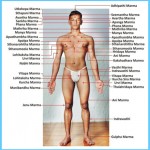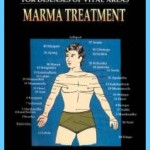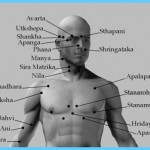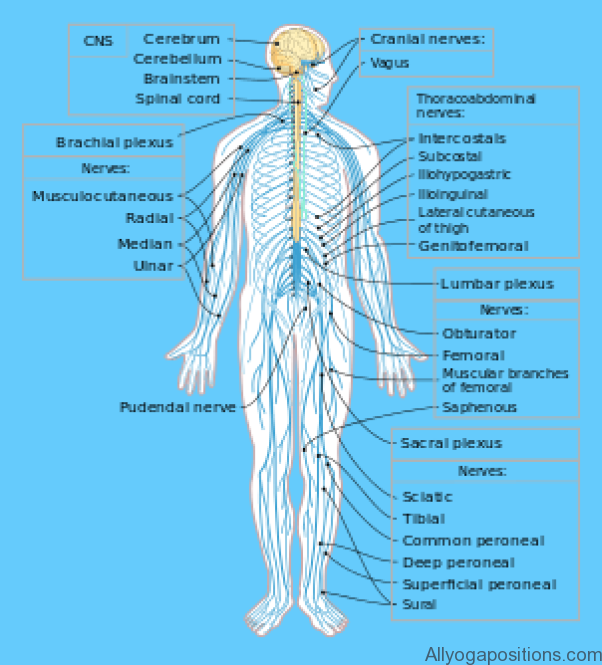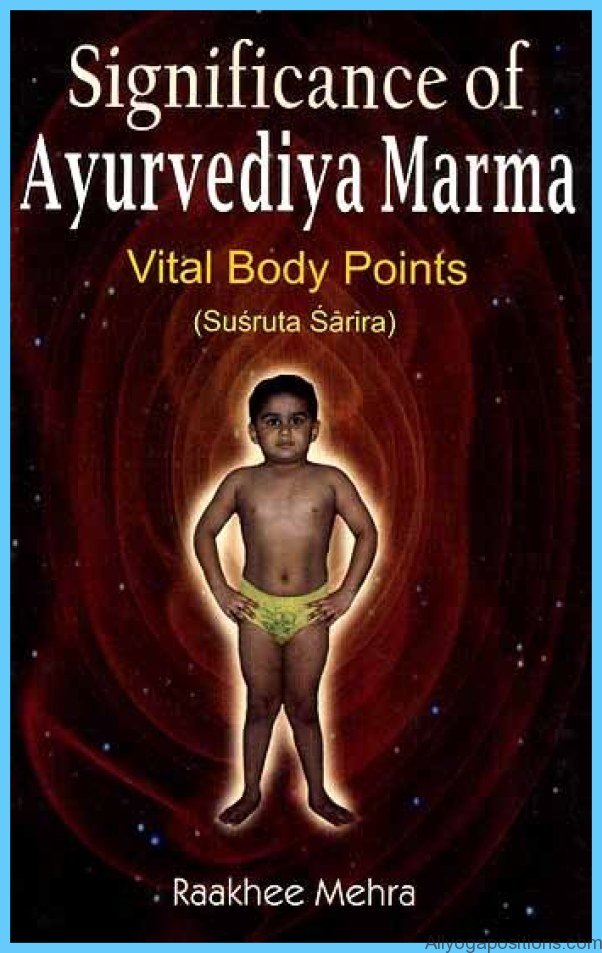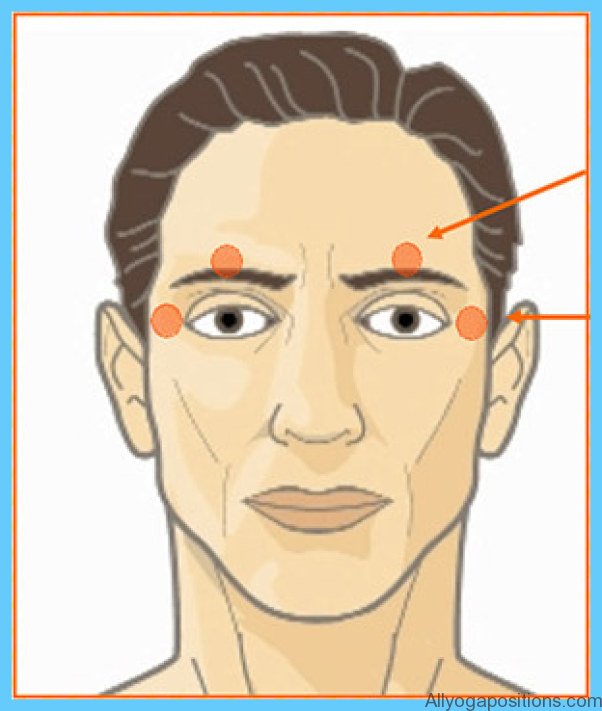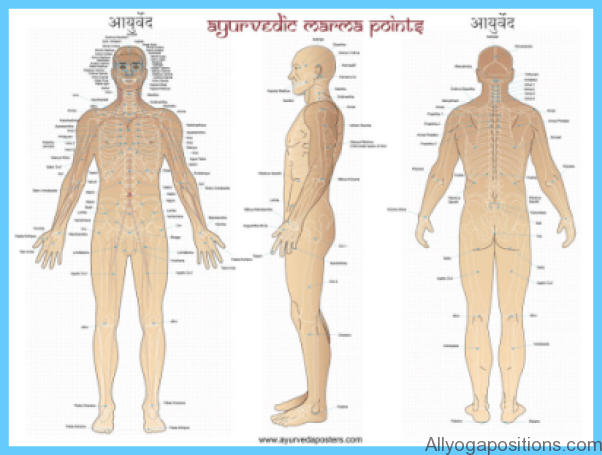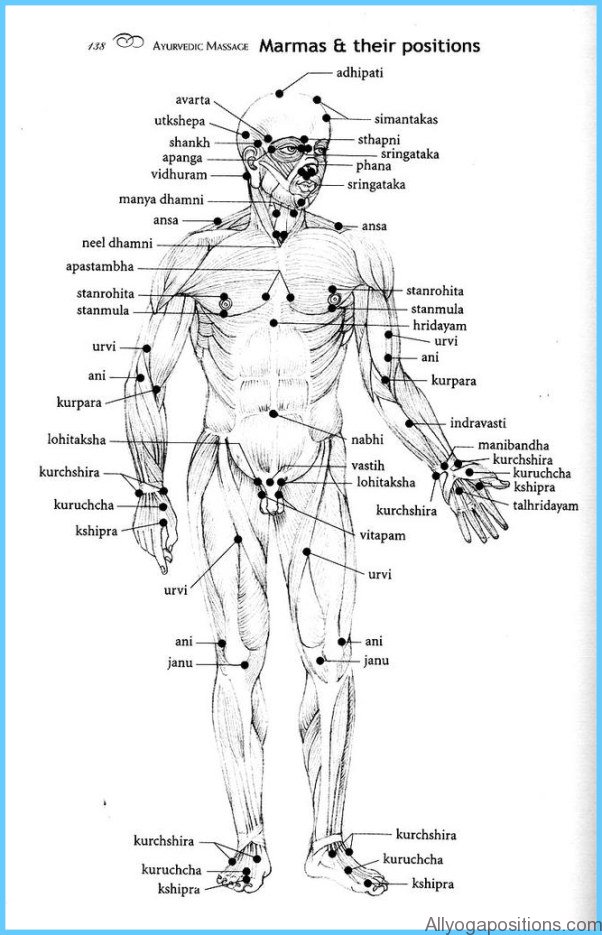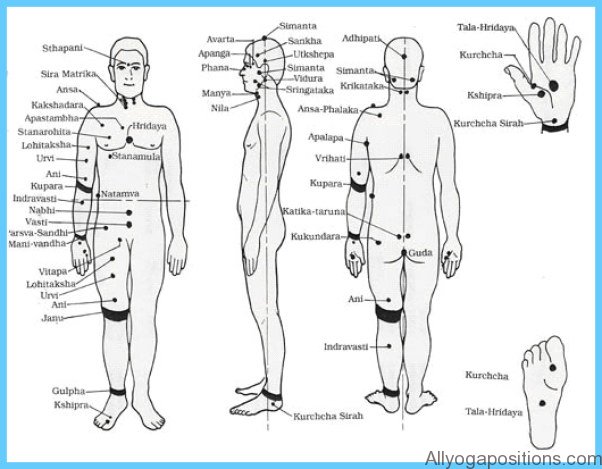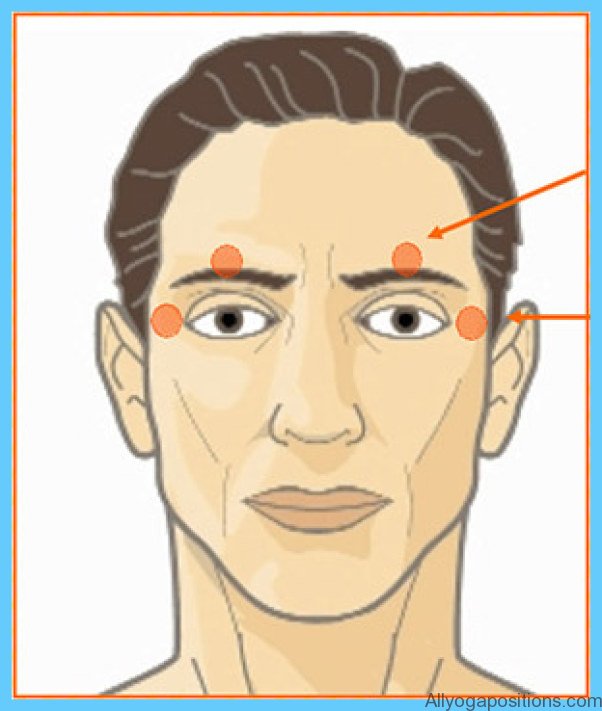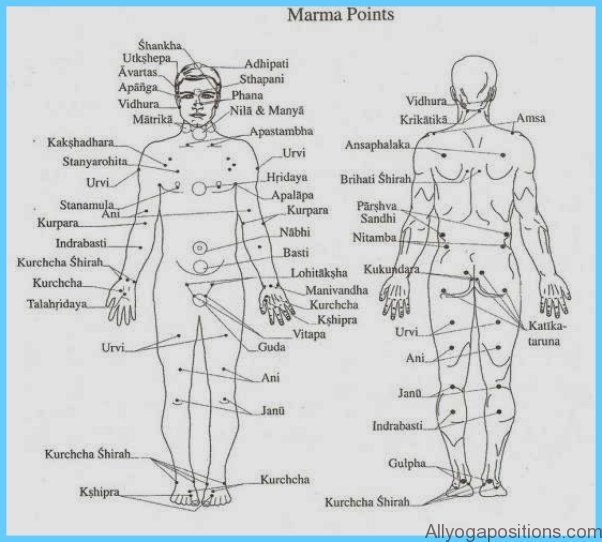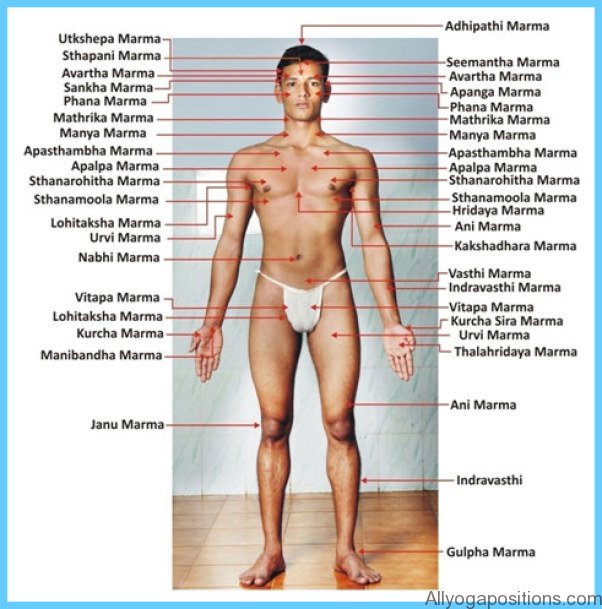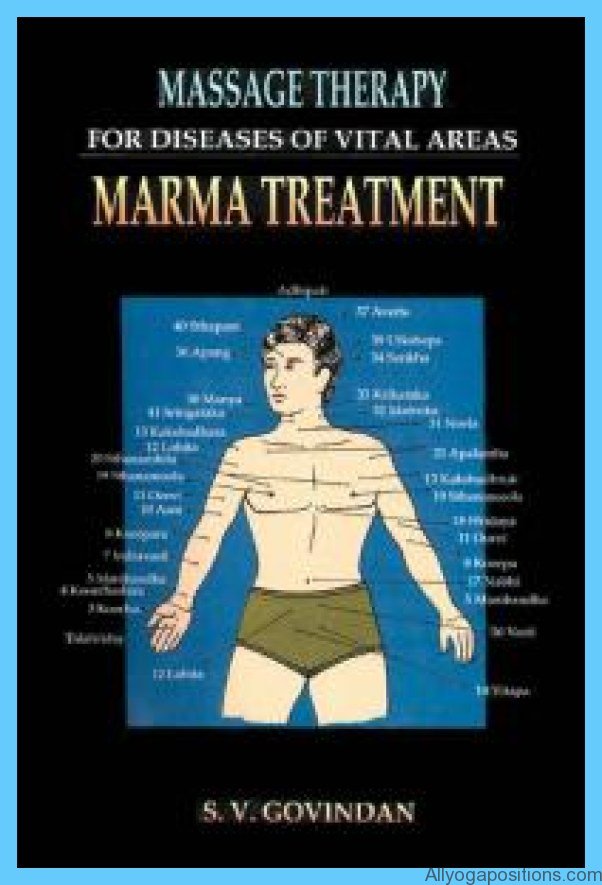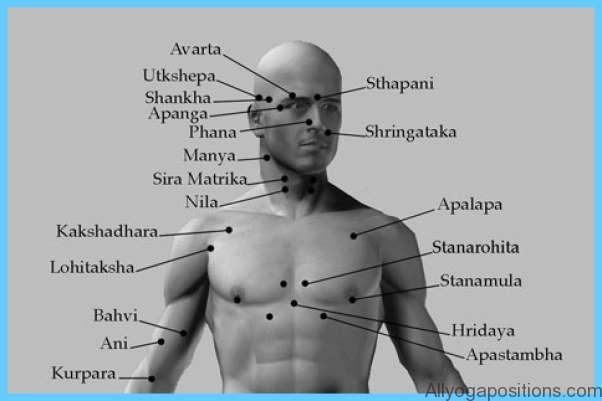Marmas
Just as the physical body has a vital network of nerves centralised in the spinal column, the subtle body has a network of energy channels called meridians or nadis (from Sanskrit meaning ‘channel’, or ‘flow’). There are 14 principal 18 g nadis, branching out to thousands of nadis, interconnecting the chakras. The use of pressure points is widespread tool in natural healthcare, for example in acupressure. In Ayurveda these points are called ‘marmas’, meaning ‘vulnerable’ or ‘sensitive’ zones, and they are an important aspect of Ayurvedic treatments. Marmas connect to the nadis and chakras, and distribute prana throughout the body.
A marma point is a junction on the body where two or more types of tissue meet, for example muscles, veins, ligaments, bones or joints. There are 107 marma points throughout the body, with 37 located on the head and neck. They are measured by finger widths (‘anguli’) of the person being treated. The location may vary from one to eight finger widths, and often relates to a region rather than a specific point.
The Secrets of Marmas Vital Points of Human Body Photo Gallery
Just as acupuncture points are used in both Chinese medicine and martial arts, marma points are also used in the martial arts of India. Warriors learn how to strike these ‘lethal’ points with force and precision to fend off attackers. The Ayurvedic healthcare system uses ‘therapeutic’ marma points as a routine part of its preventative medicine. A professional therapist uses these points to balance the vital life-force for healing purposes. They also aim to tone the surrounding muscles and balance the doshas. By making gentle circular movements with the thumb, forefinger or middle finger on a marma point, toxins can be released and eliminated by the body. Movements are generally clockwise when toning or strengthening organs or tissues and counter-clockwise when reducing excess doshas or detoxifying. Marmas can be intentionally ‘blocked’ by pressing or holding the point to briefly allow the energy or circulating fluids to flow around the marma. Marmas are sensitive areas so massage should be done carefully. In some particularly vulnerable regions, such as the front of the neck, a gentle touch to convey prana is all that is required.
In Indian Head Massage, marmas are used to harmonise the flow of prana, or to treat a specific organ or system or a specific dosha imbalance. Oils are commonly applied to marma points on the head during the scalp massage. The head and neck have the largest number of marmas and these are important for treating psychological conditions and nervous system disorders.

